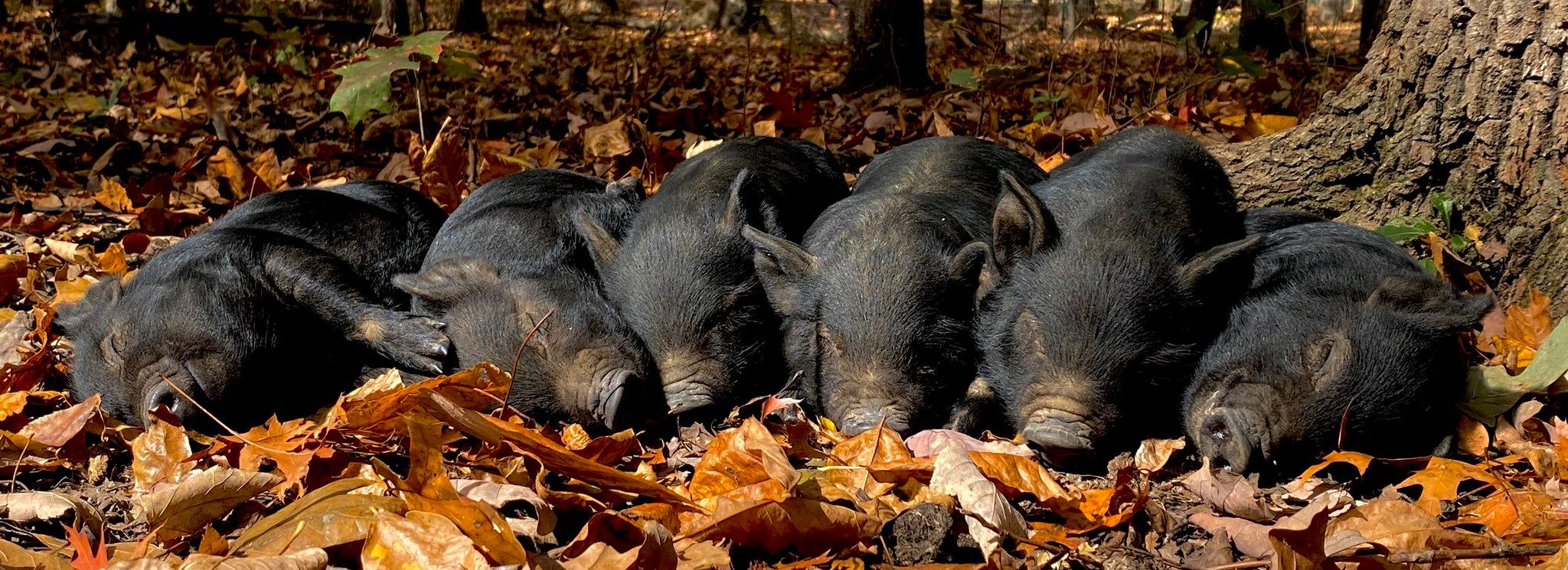American Guinea Hogs
AGHA Registered
As of January 2024, we have moved on from the American Guinea Hog to the larger Red Wattle breed.

The American Guinea Hog, known as "the poor man's pig," is a small, black, landrace swine breed that originated in the Southeastern United States. Written records indicate the presence of the Guinea Hog as early as 1811.
American Guinea Hogs are well-suited for raising in the forest and on pastured land. We expect them to forage for much of their own food and they thrive! They've been known to eat rodents, snakes, grass, roots, nuts, garden beds after harvest, and kitchen scraps. Guinea Hogs are hardy and efficient, gaining well on the roughest of forage and producing the hams, bacon, and lard essential for subsistence farming. We feed a scant bit of grain daily to keep them tame, however, we only give small quantities because it can cause them to become obese which affects fertility.
American Guinea Hog temperament is gentle and kind. They're known for their intelligence and ease of training. Sows typically allow their handlers to be hands-on with piglets. Litter sizes tend to be between 6-10 piglets, with 8 being average. Litters have excellent survivability rates. Even boars are easy keepers so long as their tusks are respected.
Sows will live up to 14 years and raise viable litters from age one to age eight years. Some breeders have raised a sow to age ten or even twelve with viable litters. Boars will live, breed, and produce viable offspring to age 17. The longest living American Guinea Hog boar documented was twenty-two years old and in a zoo setting.



